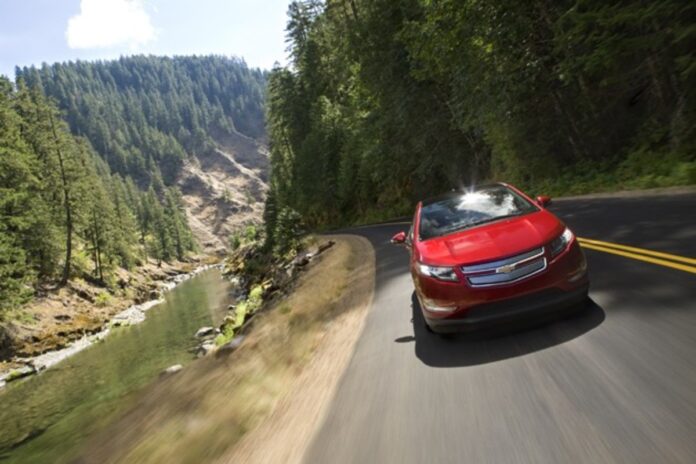As a Chevy Volt owner, you might have encountered the term “Mountain Mode” and wondered how it functions. Mountain Mode optimizes your Volt’s performance on steep inclines by conserving and managing battery power effectively. Whether you’re preparing for a journey through hilly areas or exploring ways to boost your car’s efficiency, understanding Mountain Mode can significantly improve your driving experience.
What is Mountain Mode?
Mountain Mode in the Chevy Volt is a specialized feature crafted to help drivers navigate prolonged or steep mountainous roads. This feature works by ensuring that your vehicle maintains an adequate battery charge for demanding climbs.
Once activated, Mountain Mode adjusts the car’s state of charge, creating a reserve of energy that guarantees your Volt won’t run out of power during challenging ascents. This reserve, known as a battery buffer, is set aside below the usual electric range to ensure steady performance during uphill drives.
While this mode may slightly reduce the overall electric range, it’s a worthwhile trade-off for having reliable power when needed most. It’s crucial to engage Mountain Mode in advance of steep climbs, as switching it on mid-ascent may not yield the same benefits. By anticipating your driving route, you can prepare your Volt for optimal performance.
Proper use of Mountain Mode not only enhances your driving experience but also ensures your Volt performs efficiently in hilly terrain, minimizing the risk of unexpected power depletion.
How to Activate Mountain Mode
Designed for handling steep grades, Mountain Mode can be an indispensable tool during mountain drives or when preparing for significant inclines on your route. Here’s how to enable it on both Gen 1 and Gen 2 Chevy Volt models:
- Start Your Vehicle: Ensure your Volt is powered on and ready for operation.
- Locate Drive Modes: Find the mode selection button, typically situated near the gear shifter.
- Select Mountain Mode: Press the button until the display indicates “Mountain Mode.” Your Volt will now adjust to preserve extra battery charge for uphill drives.
Note the distinction between Mountain Mode and Hold Mode. While Hold Mode conserves battery charge for future use, Mountain Mode enhances performance specifically for hilly terrains.
For drivers of a 2017 Volt, the activation steps remain the same. The primary difference lies in energy management: Gen 2 models maintain a smaller battery buffer compared to Gen 1, yet both provide ample support for navigating steep roads.
To achieve the best results, ensure your battery level isn’t critically low before switching to Mountain Mode. This preparation can make all the difference during challenging drives.
Benefits of Using Mountain Mode
Mountain Mode offers a range of advantages, particularly for those navigating rugged terrain. By maintaining a battery buffer, it ensures your Volt has the energy needed to tackle long or steep climbs.
When activated, the gas engine engages earlier, preserving battery power for demanding situations. This proactive energy management allows you to reserve more electric power, which is especially helpful in areas with limited charging stations, providing flexibility and peace of mind.
Some users have reported improved fuel efficiency by using Mountain Mode strategically, such as gaining an extra 1.5 liters of gas range. This can be particularly beneficial for remote or rural trips where fuel and charging options are scarce.
Additionally, Mountain Mode enhances efficiency during highway driving, allowing the Volt to function seamlessly as a hybrid. By balancing energy consumption and maintaining a steady reserve, it ensures smooth transitions between power sources on varied terrains.
Mountain Mode vs. Normal Mode
Choosing between Mountain Mode and Normal Mode in your Chevy Volt impacts how the vehicle uses its battery and fuel. Here’s a breakdown of their differences:
Battery State of Charge
In Mountain Mode, your Volt reserves approximately 20% of battery energy, ensuring sufficient power for steep inclines. If the battery is low when activating this mode, the engine will work to recharge it to the required level.
Conversely, Normal Mode allows unrestricted battery usage without setting aside energy for hills. This mode is ideal for flat roads or regular conditions, maximizing your electric range.
Energy Consumption
Mountain Mode may lead to slightly higher fuel consumption, as the gas engine runs to maintain the battery buffer. However, this ensures reliable performance during demanding drives.
Normal Mode, on the other hand, offers a balanced energy usage pattern, alternating between electric and gas power as needed. This mode is better suited for consistent energy efficiency over long distances.
Effect of Mountain Mode on Performance and MPG
Mountain Mode is invaluable for maintaining performance during uphill drives. By reserving battery power, it ensures your Volt can handle steep terrain without losing momentum. This feature can be especially useful when far from charging stations, as it provides a reliable energy buffer.
While Mountain Mode doesn’t significantly boost overall MPG, it helps optimize fuel use in specific scenarios. Drivers have reported modest improvements in highway mileage, such as achieving closer to 43 MPG under certain conditions, compared to the EPA-rated 35 city/40 highway MPG.
To make the most of Mountain Mode, activate it when your battery is low, and you’re approaching a lengthy climb. This strategy ensures your Volt’s performance remains consistent and efficient, even on the toughest roads.

